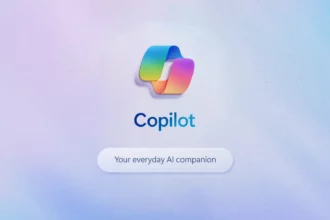Table of Contents
ToggleMichelangelo Had a Chisel – Your Students Have ChatGPT
Just as Michelangelo used a chisel to shape his masterpieces, students today use tools like ChatGPT to craft their academic work. This parallel highlights the evolving landscape of education, especially in humanities courses where AI is now a significant presence.
AI Already Integrated in Higher Education
Artificial intelligence is not a future prospect; it is here and impacting higher education. Educators face the challenge of adapting their teaching methods to incorporate AI responsibly. This helps maintain academic integrity and fosters meaningful learning while recognizing the role of generative AI in students’ work.
Practical Models for AI Integration
Adapting a humanities course to include AI doesn’t require a complete overhaul. Educators can adopt flexible, thoughtful adjustments that blend AI with traditional pedagogies. For example, in an Art History course, specific AI-aware strategies can help balance technology use and student growth.
AI-Aware Assessment Approaches
| Traditional Assessments | AI-Aware Assessments |
|---|---|
| Knowledge Check Assignments | Knowledge Checks with AI-Assisted Learning |
| In-Class Exams | Pre-tests without AI (Unassisted Practice) |
| Major Paper | Semester-long Creative Projects with AI Integration |
Optional AI Usage on Low-Stakes Formative Assessments
Allowing AI use as optional on formative quizzes creates a transparent and flexible learning environment. In this setting, students can experiment with ChatGPT to support learning without relying on it exclusively.
For example, a student might use ChatGPT to explain the differences between Romanesque and Gothic architecture. While this aids immediate understanding, relying solely on AI may hinder memory retention during timed exams requiring recall without assistance.
Low-Stakes Practice Exams Encourage Responsible AI Use
Practice exams with unlimited attempts and participation-based grading reduce pressure on students. They provide a safe space to test knowledge and identify gaps, enhancing learning.
This method promotes intentional AI use. Students learn when and how to use AI responsibly, rather than viewing it as a shortcut.
In Art History, such exams might include slide identifications or artwork attributions similar to summative assessments, preparing students effectively.
In-Person or Proctored Exams for Summative Assessment
Maintaining traditional, closed-book exams in-person or proctored ensures students internalize knowledge without digital aids. This format minimizes cheating risks.
It also reinforces mastery by requiring students to demonstrate understanding unaided. Educators make clear that some assessments are designed specifically without AI compatibility.
Replacing Traditional Papers with Creative, High-Stakes Deliverables
In place of conventional research papers, educators can assign creative projects such as videos, oral exams, or semester-long group exhibitions. These formats increase personal stakes.
Students exhibit original thinking in public or peer settings, reducing incentives to rely heavily on AI. A semester-long project, for example, might involve curating an art exhibition, selecting works, creating labels, and designing the layout.
Adjustments for Upper-Level Courses
Upper-level humanities courses benefit from nuanced AI-aware assignments. Students might compare their interpretations with AI-generated ones, critically evaluating accuracy and bias.
Projects can analyze AI’s problem-solving approaches rather than solely using it to complete assignments. This cultivates critical and creative skills vital for thoughtful scholarship.
From “No AI” to “AI-Aware” Classrooms
Instead of banning AI, the focus shifts to critical thinking and responsible usage. Treating AI as a tool supports academic integrity and student autonomy.
Courses aligned with the realities of the digital age prepare students better for their futures. Humanities remain essential but require updated instructional approaches embracing modern tools.
Key Takeaways
- AI is an active part of higher education, especially in humanities.
- Optional AI use on low-stakes assignments encourages transparency and learning ownership.
- Practice exams with unlimited attempts foster responsible AI experimentation.
- Summative assessments remain traditional to ensure mastery without AI.
- Creative projects replace papers to increase personal investment and authenticity.
- Upper-level courses use AI for critical analysis, not just task completion.
- AI-aware teaching balances technology with academic integrity and skill development.
Michelangelo Had a Chisel – Your Students Have ChatGPT: Adapting Humanities Education in the AI Era
Michelangelo sculpted masterpieces with his chisel; today’s students sculpt knowledge with ChatGPT. AI is no longer a far-off idea lurking in the future. It’s here, knocking not just politely but practically on the doorsteps of universities and classrooms. How do educators respond when the hammer and chisel become a keyboard and AI? Let’s dive into a practical, thoughtful approach.
Imagine you teach Art History, a classic humanities course. The old ways—papers, in-class tests, lectures—remain valuable, but they need a facelift, not a face-off, with AI. Your students use ChatGPT as an assistant, a starting line, or, at worst, a crutch. The goal is not to banish AI but to channel its power wisely, keeping academic integrity intact while honoring the craft of learning.
Traditional Meets AI: Assessments Reimagined
Traditional humanities assessments often include knowledge checks, in-class exams, and major research papers. The question is: How can these coexist with AI’s growing presence?
One approach is what we call an AI-aware assessment model. It blends the familiar with the new: knowledge checks that welcome AI-assisted learning, low-stakes pre-tests without AI assistance, timed in-class exams, and ambitious semester-long creative projects that incorporate AI tools. By adopting this mix, educators recognize AI without surrendering their course’s integrity.
Letting AI Join the Practice Quiz Party
Here’s a curious shift: let students use ChatGPT on formative assignments like quizzes, but keep it optional. Think of quizzes as learning playgrounds rather than final exams. Students can tap AI for help while reinforcing concepts.
Why optional? This respects student autonomy. It says, “Use AI if it helps you learn, but don’t lean on it as a crutch.” For example, if a student uses ChatGPT to differentiate Romanesque architecture from Gothic, they might get the correct answer easy-peasy. But will the crucial features stick for the timed image exam? Maybe not. Balancing AI use here builds honest knowledge retention.
Practice Exams: The AI-Savvy Reality Check
Want to help students take ownership? Introduce a low-pressure, low-stakes practice exam graded for participation. Set it up so students can retake the test as many times as they like. The focus? Discovering what they know and what needs work.
In my Art History courses, this often means slide identifications or attribution challenges identical to what the final exam will feature. Students can verify their understanding and identify gaps. Getting it wrong here isn’t failure—it’s a stepping stone. Importantly, it gently nudges more responsible and intentional AI use, turning AI from a magic wand into a study partner.
In-Person and Proctored Exams: The Classic Integrity Guards
When summative knowledge is on the line, keeping traditional, closed-book exams is a smart move. Whether it’s an in-person image ID test, proctored online exam, or handwritten short-answer session, this format ensures students internalize core content.
This setup reduces cheating and enforces content mastery. It also sends a clear message: some tests aren’t AI-compatible. It’s akin to saying, “Here’s where your own toolbox matters most.”
Reinventing the Final Paper: Creativity Meets AI
Who said the semester’s capstone project must be a 15-page paper? In a world with ChatGPT, final assignments need an upgrade from the old-school monologue format.
Picture this: students curate a themed exhibition as a group, selecting artworks, planning locations, and crafting object labels and interpretive text. This immersive project demands collaboration, critical thinking, and personal engagement far beyond copy-pasting AI’s output.
It also invokes the “personal-stakes” effect. When students present their work orally or visually before peers and instructors, they naturally avoid shortcuts because nobody wants to fumble in front of an audience. This design makes accountability inherent and genuine.
Upper-Level Courses: Embracing Nuance and AI Critique
In more advanced humanities courses, you can go deeper with AI-aware assignments. Instead of just using ChatGPT, students analyze it.
- Have them compare their own interpretations of an artwork or text with AI-generated responses.
- Ask them to annotate and critique AI outputs for accuracy, depth, or bias.
- Encourage projects that examine AI’s approach to humanities questions rather than just relying on AI to produce final work.
These strategies cultivate students as thoughtful critics and creative contributors. They transform AI from an answer machine into a critical interlocutor.
From “No AI” to “AI-Aware”: Rethinking the Classroom
The journey isn’t about quitting teaching or handing over control to AI. It’s about guiding students to think critically while interacting with AI.
Designing assignments that see AI as a tool, not a shortcut, supports academic integrity and student independence. It also prepares students for a world where AI is a daily reality rather than science fiction.
Humanities still matter deeply in today’s tech-driven world. What changes is how we teach them.
So, educators: When the chisel meets ChatGPT, it isn’t an end but an exciting new beginning—a chance to sculpt the future of learning with creativity and care. Ready to embrace the chisel of the 21st century?
What is the benefit of allowing optional AI use on formative assessments?
Allowing optional AI use on low-stakes assignments lets students explore AI tools like ChatGPT without pressure.
This approach supports flexible learning environments and encourages students to take ownership of their knowledge.
How can practice exams with unlimited attempts improve AI use?
Practice exams graded for participation give students a risk-free way to test their knowledge repeatedly.
This encourages responsible AI use and helps students recognize learning gaps before summative exams.
Why keep traditional, closed-book exams in an AI-aware classroom?
Closed-book, in-person, or proctored exams ensure students internalize knowledge without AI assistance.
These exams reduce cheating risks and confirm mastery of core concepts.
How do creative projects replace traditional research papers effectively?
Creative projects, such as videos or themed exhibitions, engage students in active learning and collaboration.
They increase “personal stakes,” making students less likely to rely on shortcuts like AI-generated content.
How can upper-level courses thoughtfully integrate AI into assignments?
Advanced courses can ask students to compare and critique AI-generated responses against their own work.
This helps develop critical thinking and creativity while understanding AI’s strengths and limits.




